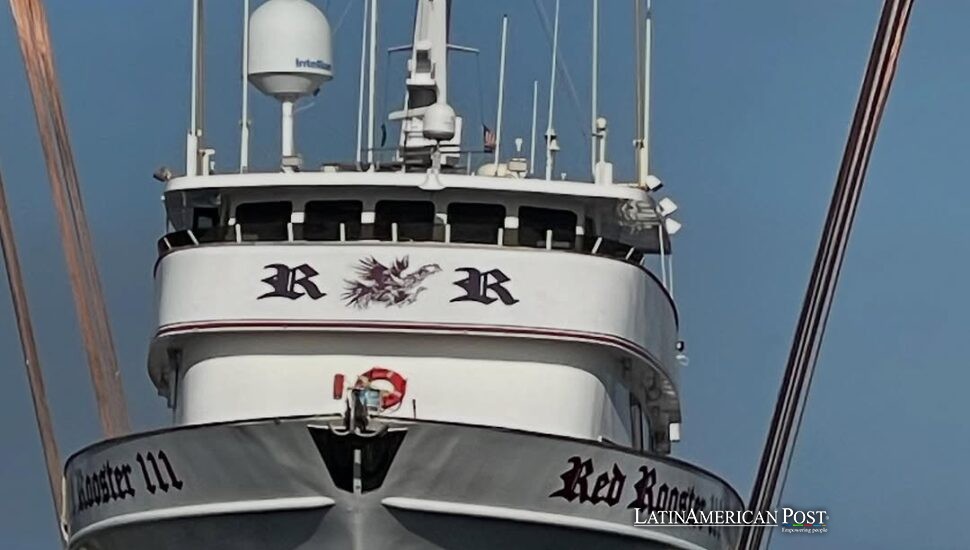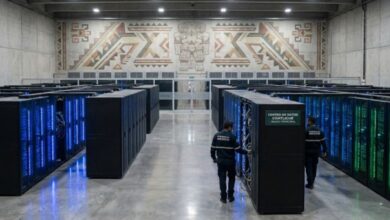Mexico’s High-Tech Showdown: US Ship Breaches Marine Sanctuary

The Red Rooster III, a vessel registered in the United States, caused concern when it entered Mexico’s Revillagigedo National Park. Mexican authorities used advanced satellite systems to monitor the entry. Conversations began about unlawful fishing and increased actions to preserve marine sanctuaries.
A Sanctuary at the Heart of the Pacific
Revillagigedo National Park (PNR) is often described as the crown jewel of Mexico’s marine conservation efforts. Comprising roughly 14,808,780 hectares in the Pacific Ocean, this protected zone encompasses four islands—Socorro, Clarión, San Benedictino, and Roca Partida—and the surrounding waters. Recognized by UNESCO as a World Heritage Site in 2016, Revillagigedo offers refuge, spawning grounds, and migratory routes to a remarkable variety of marine species, including mantas, dolphins, and several types of sharks.
Protecting these islands became a priority in 2017 when the Mexican government officially designated the region as a Marine Protected Area (MPA). After that time, fishing was banned inside the protected area, which applies to commercial and recreational sustenance activities. Conservation specialists argue that this extensive safeguard sustains local biodiversity. It helps the prosperity of fisheries outside the park’s borders. A recent study in Science found that adjacent fishing areas can see a 12 to 18 percent increase in catch per unit effort when large MPAs are placed off-limits, thanks to spillover from thriving fish populations within the preserve.
Revillagigedo’s protected state is essential to secure sound fish levels in the broader Pacific, which shows Mexico’s dedication to progressive environmental rules. However, making this ban effective isn’t easy. Given the enormous marine expanse, patrols and surveillance rely increasingly on advanced technology tools to identify, track, and report suspicious vessels.
Tracking Suspicious Movements from Space
As international attempts to stop illegal fishing increased, Mexican officials began to use advanced technology, like Skylight, besides Global Fishing Watch. These satellite systems offer current tracking of ship movements. Then, enforcement agents can separate usual travel on the sea from actions that indicate fishing. By analyzing speed, direction, and location data, these tools create an automated alert if a boat appears to circle slowly—characteristic of fishing operations—or disappears altogether by switching off its Automatic Identification System (AIS).
In late January 2025, alerts from these platforms flagged the Red Rooster III, a U.S.-flagged sportfishing vessel, entering Revillagigedo’s no-take zone. Officials with Mexico’s National Commission of Natural Protected Areas (Conanp) observed the boat moving at speeds between four and seven knots near Clarión Island, an indication consistent with targeting species such as yellowfin tuna or wahoo. This action quickly seemed wrong because ships entering the preserved zone must ask for permission and say why they travel through it. The Red Rooster III never requested.
Officials said the ship shut down its AIS. As a result, it vanished from satellite tracking. This method usually means someone wants to dodge watching. Monitoring pictures showed the Red Rooster III moved near Clarión Island on January 28, 29, and 30. The signal died. Officials wrote about the event in a release. They strengthened the feeling that the vessel did illegal fishing.
But the story continued. According to Conanp, the same vessel re-entered Revillagigedo 36 days later, maneuvering toward Clarión Island and ceasing AIS transmission upon arrival. Because park authorities felt annoyed by this evident repeated violation, they immediately told several organizations about what happened. This included the Attorney General for Environmental Protection (Profepa) and the Secretariat of the Navy (Semar) in Mexico.
Implications for Conservation and Future Monitoring
The Red Rooster III event shows the hard problems Mexico has as it works to protect important marine reserves. Worldwide fishing is becoming more forceful, mainly in areas with various life forms. Because of that, even far-off places such as Revillagigedo draw unlawful businesses. They look for sought-after species. Should these actions continue, they might harm the fragile condition that marine protected areas must uphold.
Mexican conservation officials see inter-agency work as a core necessity. Profepa, next to Semar, has its own areas of focus. One watches over protected zones. Another makes sure environmental rules stay intact. The last ensures maritime safety. These groups react better to risks when they connect plans and use platforms dependent on satellites. In addition, vessel monitoring, done as it happens, gives a shot to catch illegal fishers before an escape. It keeps future entries from happening.
This advanced method fits well with more significant global moves. They mix policies, Science, and creation to stop IUU fishing. Across the world, maritime countries lean more on remote sensing and machine learning algorithms. These programs check large amounts of data taken from worldwide vessels. Just good surveillance does not serve as a cure-all. Legal rules and quick punishments must ensure that any wrongdoing comes with real penalties. This makes potential poachers think twice about repeating the actions.
Aside from court cases, this event also presents why many specialists suggest expanding satellite surveillance programs. They believe the programs must stay clear. Open data helps in accountability. It permits independent watchers – scientists, nonprofits, or stakeholders – to follow vessel movements and warn of patterns that cause doubt. Such transparency pushes leaders ahead, especially when essential ecosystems risk damage.
In recent years, Mexico’s government has shown increasing resolve in protecting marine habitats and enforcing fishing bans. Alongside Revillagigedo, other marine protected areas—like the fishing refuge in Celestún, located in the Gulf of Mexico—offer lessons on balancing ecological preservation with the livelihood needs of coastal communities. There, local divers and fishers collaborate with enforcement agencies, carrying out periodic marine surveys to assess reef health and gauge fish populations. These on-the-ground efforts and advanced monitoring tools can create a unified defense against illegal exploitation.
Court actions started in the Red Rooster III case. Conanp gave proof containing satellite pictures, route information, and government accounts to Profepa. This agency can study environmental offenses besides punishing them. If the boat was fishing illegally, those accused risk fines, tool seizure, or other penalties. The degree of the offense determines the punishment.
The Red Rooster III’s situation showed much more than one boat’s error. For example, it showed how easily Mexico’s sea wealth could be hurt. It demonstrated new methods to enforce rules with technology. As satellites, large data sets, and computer learning grew, countries like Mexico could better protect their heritage from violations. To ensure everyone follows regulations, nations need to watch closely, have strong laws, and collaborate at all levels, including fishers, researchers, agencies, and global helpers.
Also Read: Latam-GPT: A Bold AI Path For Latin America
Even isolated island havens face the threat of capture for prized marine life. Because of this, technology is now a key part of efforts to safeguard these areas. Revillagigedo shows Mexico’s resolve to preserve biodiversity, as modern monitoring couples with strong conservation dedication. By embracing innovation and enacting firm enforcement, Mexico offers hope that sanctuaries like Revillagigedo will remain vibrant, thriving ecosystems for generations to come.




